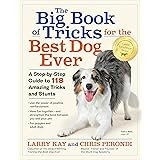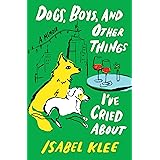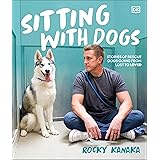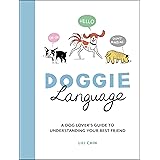The mastery demonstrated in the accompanying video, showcasing advanced dog obedience using mat work and figure eight drills without constant treats, highlights a pinnacle of canine focus and handler communication. This type of sophisticated dog training moves beyond basic commands, aiming to cultivate a dog that is not only responsive but also intrinsically motivated and reliable in any environment. It’s about building a partnership where the dog actively chooses to engage and perform, driven by a desire to work with their handler rather than solely by external food rewards.
For many dog owners, achieving this level of precision and attentiveness seems like a distant dream. However, the techniques shown – specifically mat training and figure eight drills – are highly effective pathways to achieving exceptional control and focus. These methods aren’t just about teaching tricks; they are fundamental building blocks for a well-behaved companion and an indispensable foundation for dogs involved in sports like competitive obedience, agility, or rally.
Unlocking Potential Through Mat Training: The “Go To Your Mat” Command
Mat training, often simply called “place” work, forms the bedrock of calm, controlled behavior in a variety of settings. While the video demonstrates the advanced execution of “Go to your mat” with precise “Sit,” “Rise,” “Down,” and “Back” commands, its true power lies in teaching a dog to settle and maintain a position regardless of distractions. Think of the mat as your dog’s personal “pause button” or a mobile relaxation station; wherever the mat goes, your dog understands it’s a place for calm compliance.
Initially, teaching the “Go to your mat” command involves luring and rewarding the dog for simply stepping onto the mat. However, the goal quickly shifts from just getting on the mat to *staying* there. This involves building duration and proofing against distractions. For example, you might start with your dog on the mat for five seconds, then gradually extend it to several minutes. Eventually, you introduce everyday household noises, other people, or even other pets. The dog in the video clearly understands that “mat” means sustained attention and a readiness to execute a sequence of commands without breaking position.
Beyond the stationary commands, mat training teaches your dog impulse control. A dog that can calmly stay on its mat while dinner is being prepared, guests arrive, or the doorbell rings is a dog with excellent self-regulation. This skill is invaluable, providing a dog with a clear job and a safe space, rather than resorting to unwanted behaviors out of over-excitement or anxiety. Contrastingly, a dog without this foundational control might jump on visitors or beg at the table, creating chaos rather than calm.
Building Advanced Mat Behaviors and Reliability
As seen in the video, mat training isn’t just about lying down. Commands like “Sit,” “Rise,” “Down,” and “Back” while on the mat demand a high degree of body awareness and handler focus. These aren’t random movements; they are precise shifts in position that require the dog to understand and execute complex sequences. “Back,” for instance, might refer to backing up a few inches on the mat, refining the dog’s spatial understanding and responsiveness to subtle cues.
To achieve this level, start by rewarding the slightest movement in the right direction, then gradually shape the full behavior. A common mistake is rushing the process. Instead, imagine you are teaching a complex dance routine; each step must be perfected before linking them together. This meticulous approach ensures the dog truly understands each component of the command, rather than merely guessing or performing a generalized action. Similarly, introducing objects like “Put your bone on your mat” adds another layer of mental engagement, proving that the dog can perform tasks while maintaining its place command.
Honing Focus and Connection with Figure Eight Drills
The “Figure Eight” drill, prominently featured in the video, is a dynamic exercise for building a dog’s heeling precision, focus, and connection with its handler. It’s not just walking in a pattern; it’s a continuous, flowing dance where the dog must anticipate changes in direction, maintain a tight heel position, and ignore environmental distractions. It’s a true test of a dog’s ability to “stick” to its handler, even when navigating obstacles.
Imagine the figure eight as an intricate weave, where the handler is the loom and the dog is the thread, moving in perfect synchronization. This drill is typically performed around two cones or objects spaced a short distance apart. The handler weaves around these objects in an “8” pattern, with the dog maintaining a heel position (typically on the left side, but the video also shows “on the right”). Each turn, each change of pace, demands the dog’s full attention. If the dog drifts, lags, or forges ahead, the “figure eight” breaks down, much like a loosely woven fabric unravels.
This drill is particularly powerful for several reasons:
- **Enhanced Heeling:** It strengthens the dog’s understanding of the heel command, teaching it to stay close and adjust its pace dynamically.
- **Improved Focus:** The constant changes in direction and the need to navigate around obstacles without bumping them keeps the dog mentally engaged and focused on the handler.
- **Body Awareness:** Dogs learn to use their bodies more efficiently, turning tightly and flowing with the handler’s movements.
- **Handler Connection:** It deepens the bond and communication, as the dog learns to read subtle body language and anticipate the handler’s next move, fostering a powerful working relationship.
Progressing Through the Figure Eight
Starting the figure eight drill should begin with clear verbal cues and consistent hand signals for turns. Initially, you might use a leash for guidance, gently guiding your dog into position. As the dog understands the movement, you progressively reduce reliance on the leash, allowing the dog to move freely while maintaining the heel. The handler in the video consistently uses “Figure eight” as a verbal cue, reinforcing the pattern and the expected behavior.
A key aspect, as demonstrated, is the ability to maintain the drill fluidly for an extended period. This builds stamina and reinforces the concept of sustained focus, much like a marathon runner learns to maintain pace over many miles. Where a simple “heel” walk might allow a dog to occasionally drift, the figure eight demands constant vigilance and partnership, ensuring the dog remains locked into the handler’s presence.
Beyond Treats: Cultivating Intrinsic Motivation and Reliability
Perhaps one of the most striking aspects of the video is the dog’s incredible performance without visible treats. This is not to say that treats are never used in training; rather, it highlights a training philosophy that moves beyond primary reinforcers to develop deeper, more sustainable motivation. Early in training, treats are excellent for clearly marking desired behaviors. However, as training progresses, relying solely on food can hinder a dog’s ability to perform reliably in real-world situations, or when the handler doesn’t have food.
Transitioning away from constant treats involves several strategies:
- **Fading Lures and Rewards:** Gradually reduce the frequency and predictability of treat rewards. Instead of a treat for every “sit,” perhaps every third or fifth “sit” receives a treat, while others receive praise or a quick game.
- **Using Life Rewards:** What does your dog love? A walk? A toy? A belly rub? Use these as rewards for good behavior. For instance, “Sit” at the door earns the walk. “Heel” on the walk earns the chance to sniff.
- **Building Praise and Affection:** Genuine, enthusiastic praise and physical affection become powerful reinforcers. The “Good girl” heard in the video is a prime example of a non-food reward that reinforces correct behavior and strengthens the bond.
- **Toy Play as a Reward:** For many dogs, a quick game of fetch or tug is highly motivating. The video shows the handler telling the dog to “Go get your ball” and “Bring it” after a sequence of commands, which serves as a high-value reward for its excellent work.
- **Developing a Strong Relationship:** Ultimately, the greatest motivator for many dogs is the desire to please their handler and engage in joint activities. When training becomes a cooperative effort, the dog performs out of connection and anticipation of doing something fun together, rather than just for a snack. This is akin to a child performing well in school not just for good grades, but also for the pride of accomplishment and the positive attention from their parents.
The dog in the video clearly operates from this place of intrinsic motivation, where the joy of working and the interaction with its handler are sufficient rewards. This doesn’t mean the dog never receives a treat, but rather that its performance is no longer dependent on them. This shift allows for greater reliability, as the dog learns to focus and respond in any situation, not just those where food is present. This advanced level of dog training with mats and figure eight drills, coupled with a focus on intrinsic motivation, paves the way for a truly harmonious and responsive canine companion.









